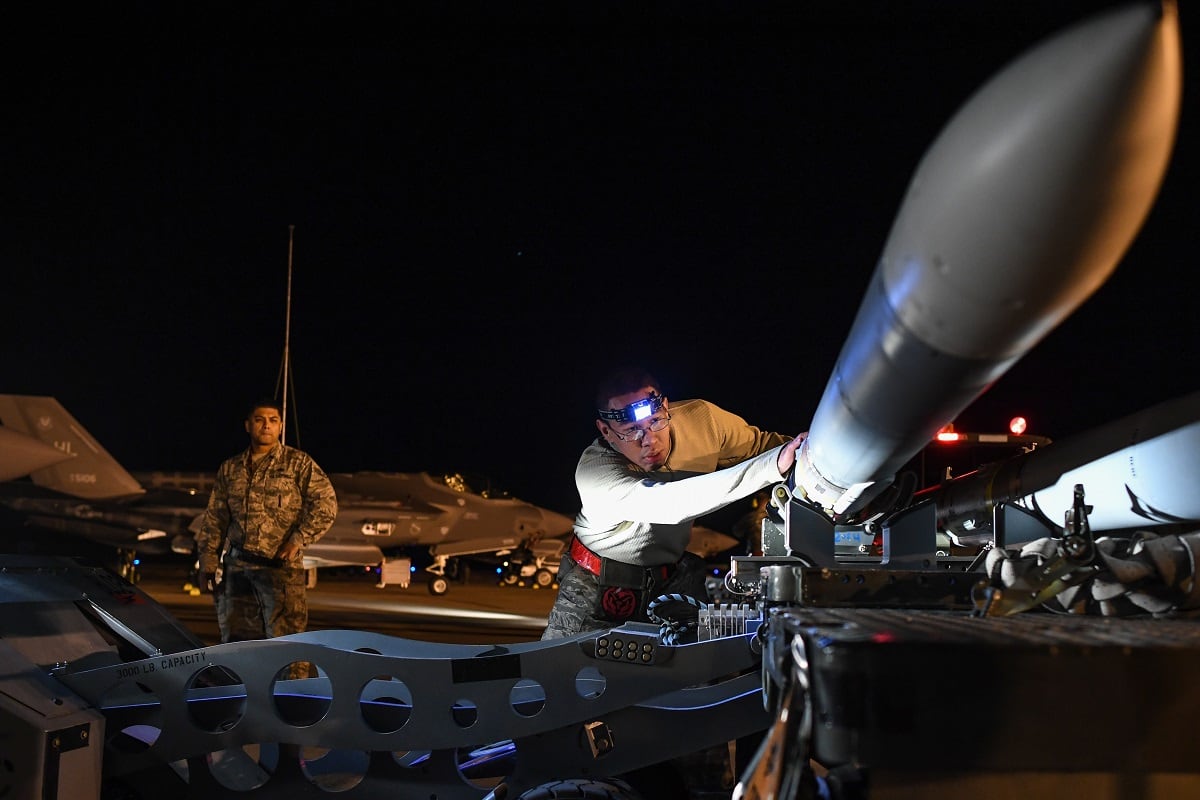WASHINGTON — The Pentagon’s fiscal 2020 budget is being billed as the bridge to the future, moving the department away from years of conflict in the Middle East and toward great power competition with Russia and China.
But the realities on the ground remain, and so does an ever-present need for munitions.
Overall, missiles and munitions made up 9 percent of the investment budget request, at $21.6 billion. The total is a 10-year high, with rapid growth happening in the last five years after the account bottomed out at $9 billion in FY15.
Click here for more coverage of the FY20 budget request.
That category covers everything from basic ammunition, mortars and artillery projectiles, as well as air-to-air, air-to-surface, surface-to-surface and surface-to-air weapons. It also covers nuclear delivery systems such as the Trident II missile and the Ground Based Strategic Deterrent.
Removing the strategic missiles portion of the budget still leaves $10.9 billion for tactical missiles and $7.2 billion for conventional ammo — $18.1 billion total to help bolster stockpiles of weapons used nearly everyday by the U.S. military in Iraq and Afghanistan, particularly as the Trump administration embraced a position in the last two years that encouraged greater military force in the fight against the Islamic State group.
RELATED

Speaking ahead of the budget release, a senior defense official said the munitions buy is also driven by years of combat. “We’re still replenishing munitions that were expended during the period of time earlier in the decade where we weren’t buying a lot but we were expending a lot of those kinds of munitions overseas,” the official said.
Among the request for key munitions procured in large quantities:
- Joint Direct Attack Munition: 40,388 requested for $1.148 billion
- Hellfire missiles: 9,000 requested for $730.8 million
- Small Diameter Bomb 1: 7,078 requested for $275.4 million
- Small Diameter Bomb 2: 1,925 requested at $412.2 million
- Joint Air-to-Surface Standoff Missile: 430 requested at $581.9 million
- Air Intercept Missile 9X: 647 requested at $309.7 million
- Advanced Medium Range Air-to-Air Missile: 389 requested at $651.2 million
- Joint Air-to-Ground Missile: 1,651 requested at $367.3 million
Notably, the JDAM, Hellfire, SDB-1, SDB-2 and JASSM would be produced at maximum capacity in their facilities.
The Army is a major driver of Hellfire procurement. It has plans to buy 5,112 of the weapons after procuring only 2,309 in FY19. Asked about that change, Ryan McCarthy, undersecretary of the Army, pointed to the need to replenish stocks, saying he believes that by FY21 or FY22 the stocks will be back to “max capacity.”
“Much of it was also extensive utilization in the Middle East,” McCarthy added. “Our rates were pretty high, so we had to make an adjustment to restore those stocks.”
Jen Judson in Washington contributed to this report.
Aaron Mehta was deputy editor and senior Pentagon correspondent for Defense News, covering policy, strategy and acquisition at the highest levels of the Defense Department and its international partners.






